Just a stone's throw from the Acropolis lies the fascinating Roman Agora – a bustling marketplace gifted to Athens by none other than Julius Caesar and Emperor Augustus themselves!
Built between 19-11 BC, this commercial hub showcases classic Roman architecture while telling the story of Athens under Roman influence. Don't miss the nearby Library of Hadrian, added later during Emperor Hadrian's reign! The Roman Agora offers a perfect glimpse into how two powerful civilizations – Greek and Roman – blended to create something uniquely spectacular.
What is an Agora?
An agora was the central public space in ancient Greek city-states, with the word literally meaning "gathering place" in Ancient Greek. These open areas served as multifunctional hubs of civic life, hosting political assemblies, commercial markets, social gatherings, and religious ceremonies. Typically positioned centrally within cities, agoras featured colonnaded walkways (stoae), shops, statues, and altars.
The Athenian agora holds particular historical significance as the location where philosophical discussions laid the groundwork for democratic principles, essentially becoming the birthplace of democracy. These spaces were fundamental to Greek society, representing the heart of urban life.
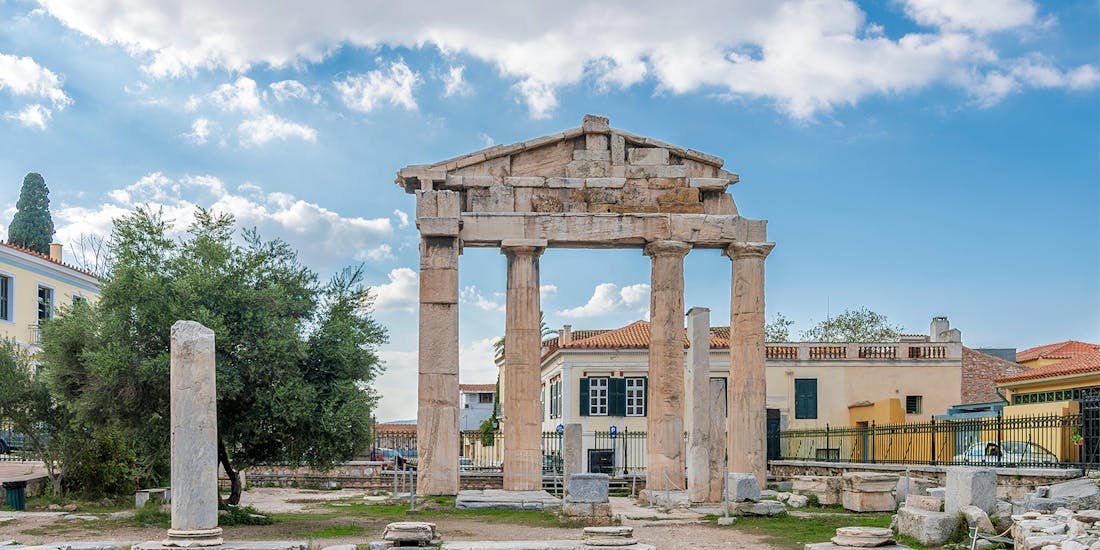
Agoras at Acropolis of Athens
The Acropolis area features two distinct agoras:
Ancient Agora: Located northwest of the Acropolis, this Greek-era center hosted political, philosophical, religious, and commercial activities. Key structures include the Temple of Hephaestus and Stoa of Attalos.
Roman Agora: Built northeast of the Acropolis during the 1st century BC, this marketplace features the Gate of Athena Archegetis and public facilities.
Why visit the Roman Agora?
- ✅ Step into ancient history: Walk through a marketplace built over 2,000 years ago!
- ✅ Iconic landmarks: Admire the Gate of Athena Archegetis, the grand entrance funded by Julius Caesar himself.
- ✅ The Tower of the Winds: See one of the world’s oldest meteorological stations, complete with carved wind gods.
- ✅ Less crowded than the Ancient Agora: A peaceful alternative to the bustling Greek Agora nearby.
- ✅ Visible from outside: If you're short on time, you can still admire many ruins without entering.
Recommended tickets to the Acropolis
Highlights of the Roman Agora
1The Gate of Athena Archegetis
This impressive marble gateway marks the western entrance to the Roman Agora. Built in 11 BCE, this gate was funded by Julius Caesar and Augustus. It features four elegant Doric columns. The Athenians dedicated it to Athena "the Leader," beautifully blending Roman patronage with Greek tradition. An inscription on the gate acknowledges its imperial benefactors.
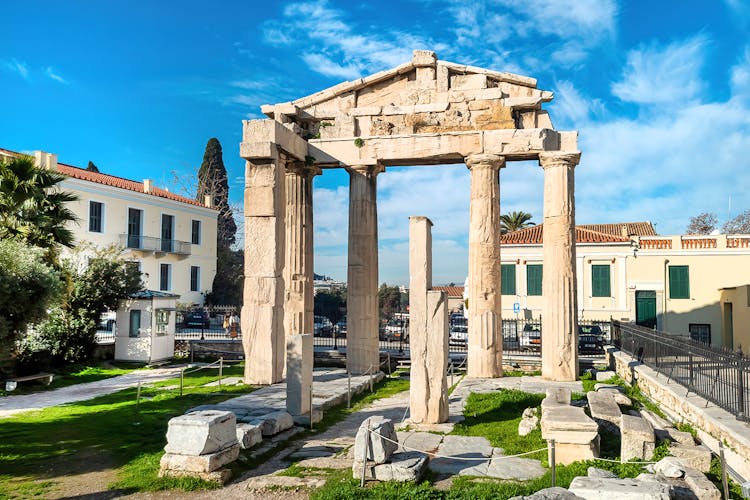
2Tower of the Winds (Horologion of Andronikos Kyrrhestes)
The Tower of the Winds brilliantly merged art with ancient science. This octagonal tower served as Athens' first weather station and sophisticated timekeeper, featuring carvings of wind gods, sundials, and a water clock inside. Its ingenious design demonstrated the advanced scientific thinking of its time, establishing it as one of history's earliest clock towers.
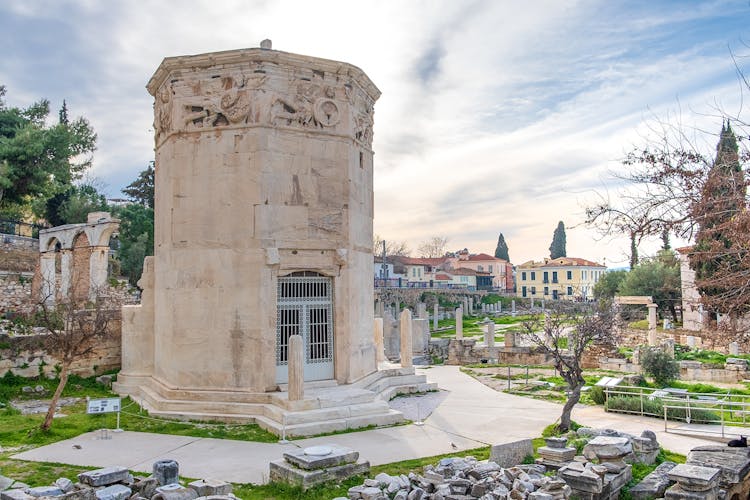
3Vespasianae (Ancient Public Toilets)
These communal toilets showcase Roman engineering. With flowing water and clever drainage systems, they weren't just practical facilities but social hubs where citizens chatted while handling their business. Named after Emperor Vespasian (who famously taxed urine collection), these latrines offer a glimpse into everyday Roman life in Athens.
4Fethiye Mosque
The Fethiye Mosque, built in the late 17th century near the Roman Agora, showcases Ottoman architecture with its central dome and arched entrance porch. Named for "conquest" in Turkish, it has served many purposes throughout history – from Catholic church to bakery. Today, it hosts cultural exhibitions, offering visitors a glimpse into Athens' diverse heritage.
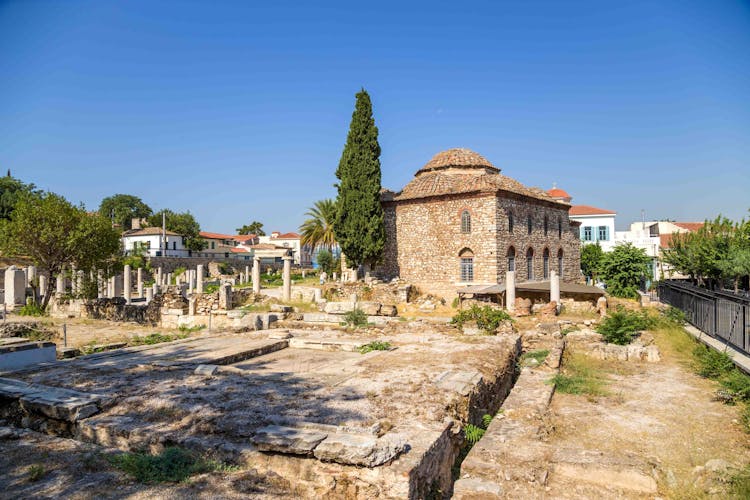
5Eastern Propylon
The Eastern Propylon served as the marketplace's eastern gateway, featuring four elegant Ionic columns crafted from gray Hymettian marble. Built between 19-11 BC during Julius Caesar and Augustus's funding of the Roman Agora, this entrance was strategically connected to ancient Athens' road network. Its sophisticated design showcases Roman architectural preferences while creating a striking contrast with the Pentelic marble used elsewhere in the complex.
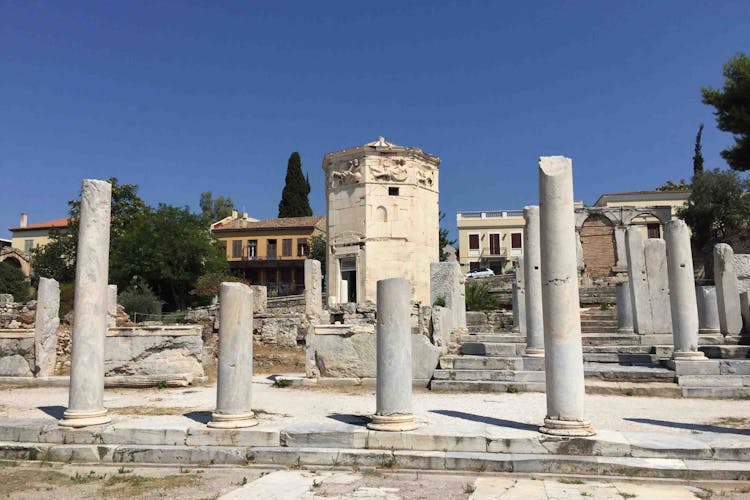
Visitor information
Facilities & restrictions
- 📍 Location: Roman Agora, Adrianou Street, Athens, Greece
- 🕰️ Opening Hours:
- Summer (April–October): 8am–8pm
- Winter (November–March): 8am–3pm
- 🎟️ Tickets: Included in the Acropolis Combo Ticket – covers multiple sites in Athens!
- 🚇 Nearest Metro: Monastiraki (Line 1 & 3)


